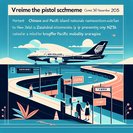
The relationship between Canberra and Perth reached new tension on 6 November 2025 after the Cook Government publicly rejected a federal proposal to trim Western Australia’s 2025-26 State Nominated Migration Program (SNMP) allocation from about 5,000 to 3,400 places—a 30 per cent cut. Premier Roger Cook warned that the reduction would choke off urgently needed engineers, tradespeople and health professionals just as the state ramps up housing, infrastructure and AUKUS-related defence projects.
Cook argued that Western Australia’s economy faces unique labour shortages that cannot be filled locally, citing soaring vacancy rates in construction and resources. He noted that without sufficient skilled-migration places, mega-projects at Henderson shipyard and the Perth Metronet expansion could face cost blow-outs and delays. Business groups including the Chamber of Commerce and Industry WA echoed these concerns, stating that a smaller nomination ceiling would push employers toward costlier 482 visa sponsorship or offshore production.
![Western Australia Pushes Back Against Federal Plan to Slash Skilled-Migration Quota]()
Home Affairs officials insist the interim cap is administrative and not a “hard limit” on the number of skilled visas that can be granted nationally. The Commonwealth says the move will help clear backlogs and improve processing times. But state officials counter that invitation caps inevitably shape on-the-ground outcomes because most applicants follow the state-nomination pathway to secure permanent residence.
For multinationals relocating staff to WA, the stoush injects new uncertainty into workforce planning. Companies banking on the 190 or 491 state-sponsorship routes may need to revise mobility budgets or lodge expressions of interest earlier to secure a spot before quotas are exhausted. Mobility managers are advised to brief hiring managers on alternative pathways—such as labour-agreement streams or regional concessions—until negotiations between the two governments are resolved.
The dispute highlights a broader recalibration of Australia’s migration program as the Albanese Government tries to balance housing pressures with industry’s call for talent. Whether WA succeeds in clawing back its allocation will shape not only project timelines but also Australia’s reputation as an easy place to deploy global talent.
Cook argued that Western Australia’s economy faces unique labour shortages that cannot be filled locally, citing soaring vacancy rates in construction and resources. He noted that without sufficient skilled-migration places, mega-projects at Henderson shipyard and the Perth Metronet expansion could face cost blow-outs and delays. Business groups including the Chamber of Commerce and Industry WA echoed these concerns, stating that a smaller nomination ceiling would push employers toward costlier 482 visa sponsorship or offshore production.

Home Affairs officials insist the interim cap is administrative and not a “hard limit” on the number of skilled visas that can be granted nationally. The Commonwealth says the move will help clear backlogs and improve processing times. But state officials counter that invitation caps inevitably shape on-the-ground outcomes because most applicants follow the state-nomination pathway to secure permanent residence.
For multinationals relocating staff to WA, the stoush injects new uncertainty into workforce planning. Companies banking on the 190 or 491 state-sponsorship routes may need to revise mobility budgets or lodge expressions of interest earlier to secure a spot before quotas are exhausted. Mobility managers are advised to brief hiring managers on alternative pathways—such as labour-agreement streams or regional concessions—until negotiations between the two governments are resolved.
The dispute highlights a broader recalibration of Australia’s migration program as the Albanese Government tries to balance housing pressures with industry’s call for talent. Whether WA succeeds in clawing back its allocation will shape not only project timelines but also Australia’s reputation as an easy place to deploy global talent.











